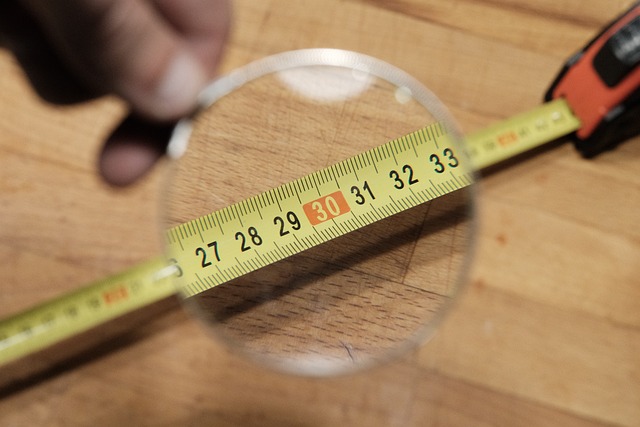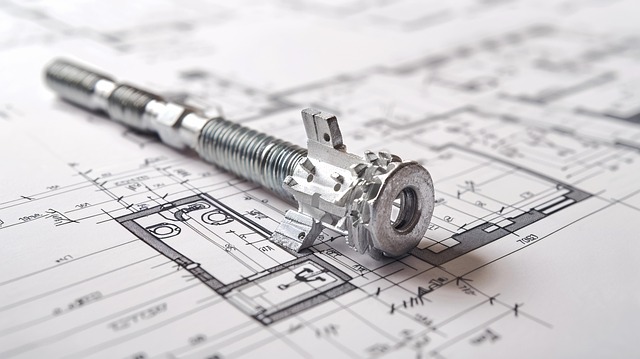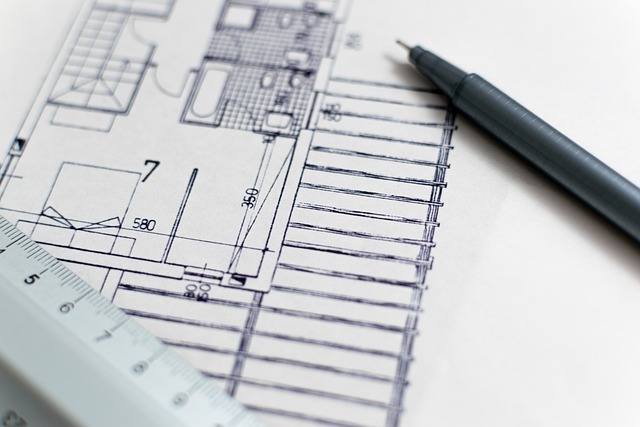Ensuring Precision: Optimizing UK Technical Guideline Translations
Translation services for UK Technical Guidelines and Standards are vital for maintaining safety, quality, and consistency across diverse industries. These guidelines, which cover sectors like construction, healthcare, and technology, require accurate…….

Translation services for UK Technical Guidelines and Standards are vital for maintaining safety, quality, and consistency across diverse industries. These guidelines, which cover sectors like construction, healthcare, and technology, require accurate translations to reach global audiences. Specialized translation services must grasp both linguistic nuances and technical concepts to deliver precise, compliant content. Quality Assurance protocols, including multiple reviews, native speaker proofreading, and advanced tools, ensure accuracy and consistency. Accurate translations are critical in high-risk industries, preventing legal issues, safety hazards, and public trust erosion. When selecting a provider, look for experienced translators, robust quality assurance processes, and tailored solutions. Future advancements in AI and ML promise even greater translation precision and efficiency.
The accuracy of translating UK technical guidelines is paramount for ensuring compliance, safety, and standardization across diverse industries. This article explores the critical aspects of rendering technical documentation precise and culturally relevant within the UK context. From understanding the significance of guidelines to addressing challenges in translation and best practices for service providers, we delve into strategies that enhance overall quality. Discover how accurate translations impact compliance, safety, and future trends aimed at refining precision in UK technical guideline translations.
- Understanding Technical Guidelines and Their Significance in the UK
- The Role of Accurate Translation in Standardization Processes
- Challenges in Translating Technical Documentation
- Ensuring Cultural Relevance in UK-Specific Content
- Quality Assurance Checks for Precision and Consistency
- Industry Best Practices for Technical Translation Services
- Impact of Inaccurate Translations on Compliance and Safety
- Choosing the Right Language Service Provider for Technical Projects
- Future Trends in Enhancing Translation Accuracy
Understanding Technical Guidelines and Their Significance in the UK

Technical guidelines and standards play a vital role in ensuring safety, quality, and consistency across various industries in the United Kingdom. These guidelines provide clear directions and specifications for businesses and professionals to adhere to, promoting uniformity and reliability. They cover a wide range of sectors, from construction and manufacturing to healthcare and technology, and are regularly updated to incorporate new advancements and best practices.
Accurate translations of these technical guidelines are essential when serving international audiences or operating in multilingual markets. Translation services for UK technical guidelines and standards must capture not only the linguistic nuances but also understand the underlying technical concepts. This ensures that the translated content remains precise, actionable, and aligned with the original intent, thereby facilitating seamless communication and compliance across borders.
The Role of Accurate Translation in Standardization Processes

Accurate translation plays a pivotal role in standardization processes, especially when it comes to technical guidelines and standards in the UK. The need for precise and consistent communication cannot be overstated, as these documents form the backbone of various industries and sectors, ensuring safety, quality, and compatibility. Inaccurate translations can lead to misunderstandings, misinterpretations, and even legal complications, as standards are often subject to strict regulations.
For instance, in technical guidelines related to healthcare or engineering, a slight error could have severe consequences. Therefore, relying on professional translation services for UK Technical Guidelines and Standards is essential. Such services employ linguists with specialized knowledge who understand the nuances of technical terminology and can adapt them across languages while maintaining their original intent and accuracy.
Challenges in Translating Technical Documentation

Technical documentation translation is a complex process, especially when it comes to guidelines and standards specific to a country like the UK. The main challenges lie in accurately conveying specialized terminology and ensuring compliance with both language and regulatory requirements. Each industry has its own unique jargon, and technical fields are no exception, making precise translation an art. Misinterpretation of terms could lead to misinterpretation of instructions or safety protocols, which is highly risky, especially in sectors like healthcare or engineering.
Translation services for UK Technical Guidelines and Standards demand a deep understanding of the source material and the target language. Translators must possess subject matter expertise to handle complex concepts accurately. They also need to stay updated with any changes in regulations or industry standards to provide relevant and up-to-date translations, ensuring that the documentation remains reliable and effective across borders.
Ensuring Cultural Relevance in UK-Specific Content

When translating technical guidelines and standards, cultural relevance is paramount. The UK has its own unique language nuances, regulations, and even colloquialisms that can significantly impact how information is understood and applied. Translation services for UK Technical Guidelines and Standards must therefore go beyond simple word-for-word rendering.
Cultural adaptability involves more than just ensuring the text reads naturally in the target language; it requires a deep understanding of local practices, terminology, and legal frameworks. For example, what may be an accepted engineering term in one country could have no direct equivalent or carry a different connotation in another. Professional translators specializing in UK technical translations are equipped to handle these intricacies, ensuring that guidelines remain effective and relevant within the British context.
Quality Assurance Checks for Precision and Consistency

When it comes to translating UK technical guidelines and standards, precision and consistency are paramount. Professional translation services employ rigorous Quality Assurance (QA) checks to ensure accuracy across various levels. These checks involve multiple rounds of review by in-house experts who scrutinize every detail, from terminology and syntax to cultural nuances and regulatory requirements. Advanced tools like machine translation memory and terminology databases also play a crucial role, helping to maintain consistency throughout the document and across different projects.
The process often includes proofreading, editing, and final revision by native speakers with specific industry expertise. This ensures not only grammatical correctness but also that the translated content aligns perfectly with the original intent and scope of the UK technical guidelines. Such meticulous QA procedures guarantee that the translated documents are reliable, up-to-date, and fully compliant with the source material’s standards.
Industry Best Practices for Technical Translation Services

The accuracy and quality of technical translations are paramount, especially in industries where precise communication is critical. For UK technical guidelines and standards, adhering to industry best practices ensures that translation services meet or exceed expectations. Professional translators should possess not only language expertise but also a deep understanding of the subject matter. This involves staying updated with the latest industry developments, terminology, and specialized glossaries.
Best practices also emphasize the importance of quality assurance processes. These include thorough editing, proofreading, and peer review to catch any nuances or technical errors. Additionally, leveraging advanced tools like translation memory software can enhance consistency and accuracy across large documents containing repetitive technical terms and phrases. This ensures that the final translated document not only conveys the intended meaning but also adheres to the highest standards of technical translation services in the UK.
Impact of Inaccurate Translations on Compliance and Safety

Inaccurate translations of UK technical guidelines and standards can have severe repercussions, particularly in industries where compliance and safety are paramount. When critical information is miscommunicated or misinterpreted due to translation errors, it can lead to non-compliance with regulations, which carries significant legal and financial implications. For example, medical device manufacturers relying on incorrect translations may produce equipment that doesn’t meet essential safety requirements, posing risks to patient health. Similarly, in the automotive sector, inaccurate translations of technical standards could result in vehicles not fulfilling safety criteria, leading to potential accidents and liability issues.
Moreover, errors in technical documentation can hinder effective communication among stakeholders, including regulatory bodies, manufacturers, and consumers. This breakdown in understanding may delay crucial decision-making processes, impact product development timelines, and erode public trust. Therefore, using reliable translation services for UK technical guidelines is essential to ensure accurate knowledge transfer, maintain compliance, and ultimately, safeguard public safety.
Choosing the Right Language Service Provider for Technical Projects

Choosing the right language service provider is paramount when it comes to accurately translating UK technical guidelines and standards. These documents are often highly specialized, containing intricate terminology and precise instructions that demand a deep understanding of both the source and target languages. Look for providers with experienced translators who specialize in technical translations, ensuring they have a proven track record in your specific industry.
Reputable service providers invest heavily in quality assurance processes, employing advanced tools and human experts to ensure accuracy and consistency. They should also offer services tailored to your needs, such as terminology management systems, which help maintain a consistent vocabulary across all translated documents. Additionally, consider their project management approach – efficient communication, clear deadlines, and regular updates are essential for successful technical translation projects.
Future Trends in Enhancing Translation Accuracy

The future of enhancing translation accuracy for UK technical guidelines and standards lies in leveraging advanced technologies and innovative practices. Artificial Intelligence (AI) and Machine Learning (ML) are set to play a pivotal role, offering unprecedented levels of precision and efficiency. These technologies can analyse vast amounts of data from previous translations, industry-specific terminology, and context-based rules to provide more accurate interpretations. For example, neural machine translation models can capture linguistic nuances and improve the fluency of translated content, making it closer to the original intent.
Additionally, the integration of Human-in-the-Loop (HITL) methods ensures a critical human element, where expert translators review and refine AI-generated translations, further elevating accuracy. This hybrid approach combines the speed and scalability of automation with the precision and contextual understanding of human linguists. As technology advances, we can expect even more sophisticated tools that adapt to specific domains, ensuring that UK technical guidelines remain accurate and up-to-date in a rapidly evolving global landscape.
In ensuring adherence to UK technical guidelines, accurate translations are paramount. Navigating the intricate language of these documents demands a deep understanding of both technical terminology and cultural nuances. By employing robust quality assurance processes, industry best practices, and staying abreast of emerging trends in translation technology, language service providers can deliver precise and reliable interpretations of UK technical guidelines and standards. This commitment to excellence is not just about compliance; it’s about fostering innovation, safety, and effective communication across diverse industries. Investing in high-quality translation services for UK technical guidelines becomes a strategic imperative for organizations aiming to thrive in a globally competitive landscape.






